Return of the Mountaineer
2 Comments
Mountaineering led me to photography and rock climbing brought me to California. About twenty years ago, my friend from France visited me and we went climbing in Yosemite, tackling the classic “Central Pillar of Frenzy” on Middle Cathedral. Like many in Yosemite, that climb follows cracks in the rock. Instead of pulling on holds, you’d jam your fingers or hands in the cracks. The next day, both of my wrists hurt, and instead of climbing, we hiked. Back in the Bay Area, I was still in pain and saw a doctor. The diagnostic was devastating. I was told that I could not climb cracks again. The initial culprit wasn’t even rock climbing, rather improper keyboarding technique that had led over the years to repetitive stress injury (RSI), but climbing made it worse. For the next twenty years, I did not do a single multi-pitch rock climb.
Contributing to keep me away from the rock, I married a self-described acrophobic and started a family. The forced retirement focussed my efforts on the national parks photography project. Over the next two decades, I would visit Grand Teton National Park five times, the average number of visits for each national park. Each time, I would photograph the striking Grand Teton peak from afar, as if the mountain now belonged to a different plane, within sighting distance, yet now inaccessible. As the years passed, I became more curious about what the view from the iconic summit would look like.
This year, as I was planning a Grand Teton trip to view the eclipse with my brother-in-law Nhon, it occurred that since he’s become such a strong climber, even though we had never climbed together in the mountains, we could team up to climb the Grand Teton. If the world was going to end after the eclipse, at least I would have stood on the “Grand” before I died!
The Plan
The Grand Teton is one of the classics of American mountaineering. As can be guessed from its sharp profile, there is no hiking route to the summit. Even the two easiest and most popular routes, the Owen-Spalding and Upper Exum Ridge, require technical rock climbing with ropes. We set our sights on the Direct Exum Ridge because the route, which combines the Lower Exum Ridge with the Upper Exum Ridge is listed in the historic book Fifty Classic Climbs of North America.
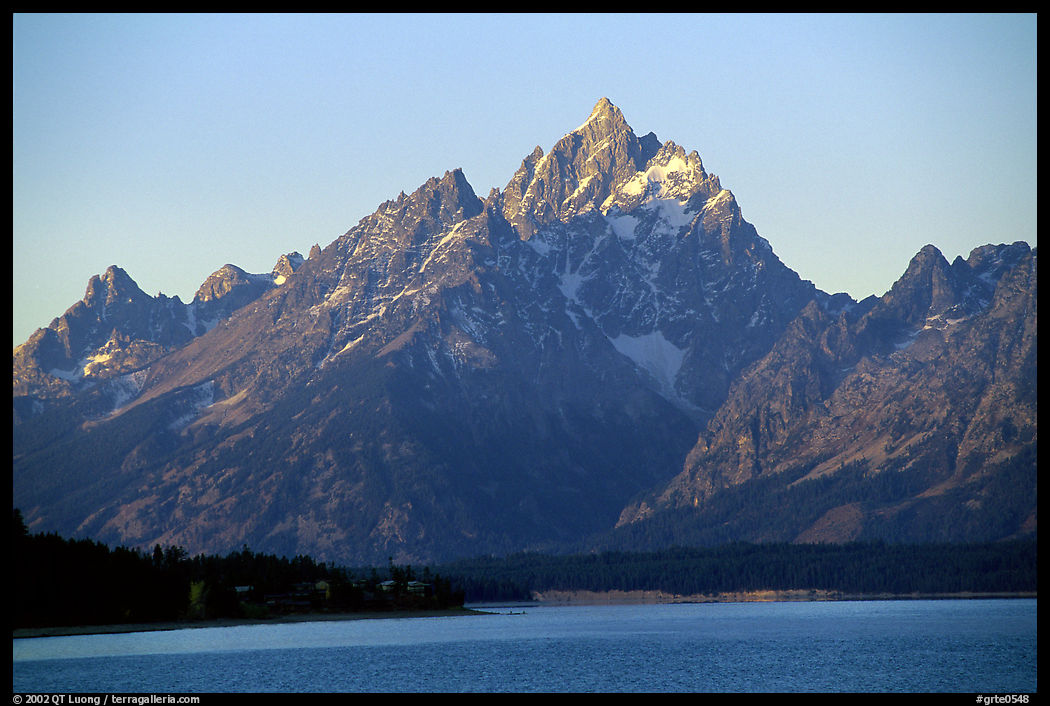
Since the 7,000 feet of elevation gain from the trailhead to the summit seemed to be a bit too much to handle round-trip in a single day, the first step was to secure a backcountry camping permit. Most of them are provided on a first-come, first served basis, and competition is fierce as only 18 people are allowed to camp at our preferred site, the Lower Saddle. When we showed up at 5:30 am at the Jenny Lake Ranger Station, 10 people were ahead of us, but by the time it opened, at 8 am, more than 50 were behind us. The process was efficient and we were happy to walk out permit in hand.
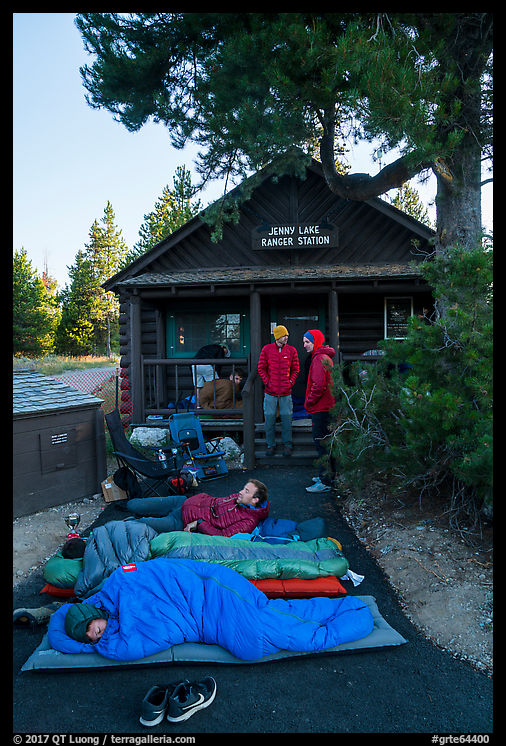
The Garnet Canyon Trail
We started at the Lupine Meadows Trailhead (6,650 feet) in the early afternoon. From there, we followed the trail up Garnet Canyon for 5,000 feet elevation gain in 7 miles. Since it is such a steep hike, I didn’t expect it to be that popular, but when the views opened up above the forest, I began to see why it was the case. The scenery along the trail was rewarding in itself and with such an elevation gain, the scenery changed from forest, to subalpine meadows, then rocky terrain with glaciers. As the impressive peaks got closer, we were grateful to be able to easily refill bottles with the sweet water of the cascading mountain stream. From Jackson Hole, the mountains are only a backdrop, but on the trail, they are surrounding you. I felt I was coming home.
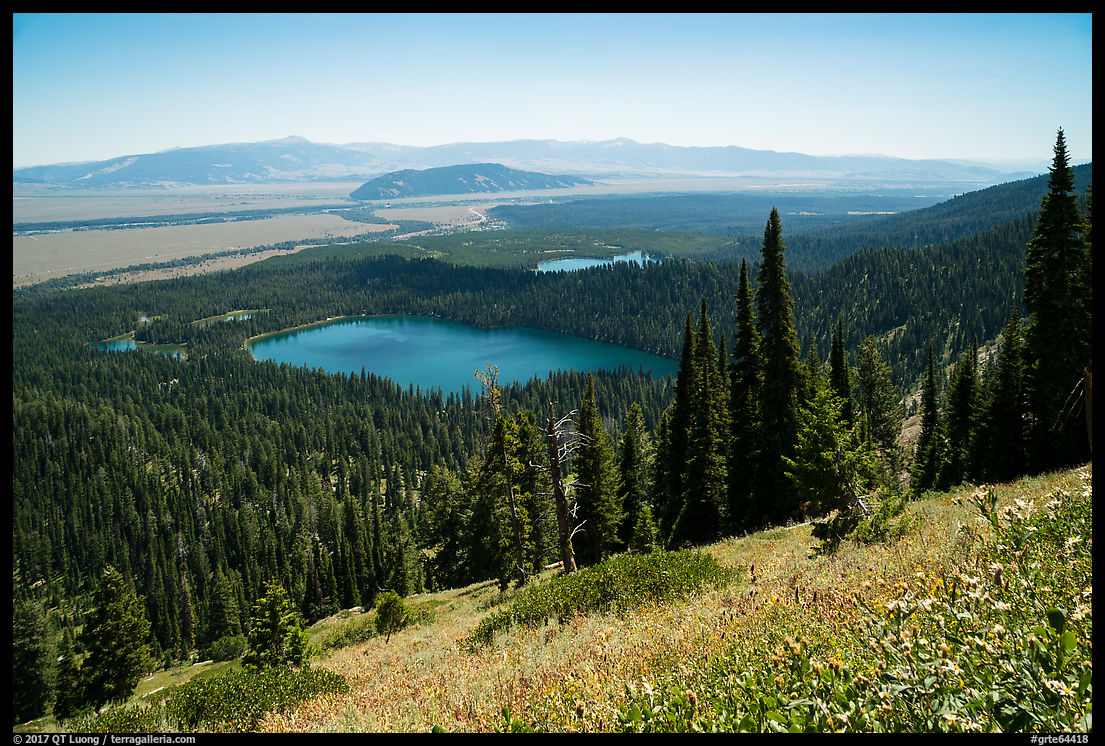
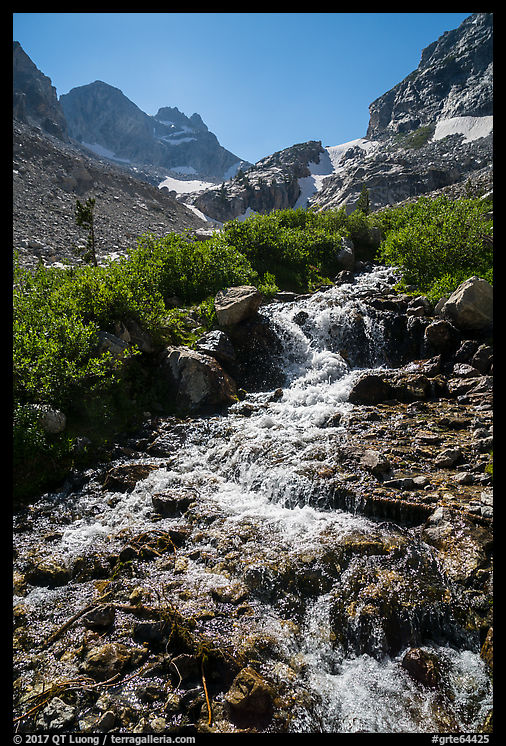
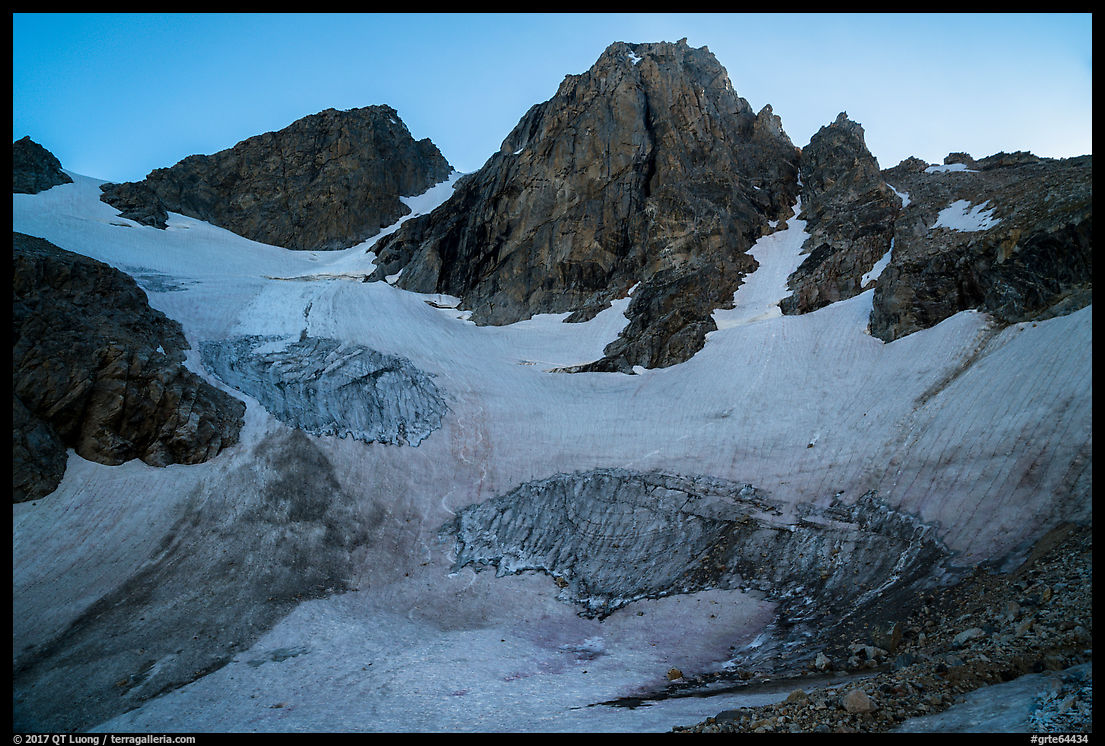
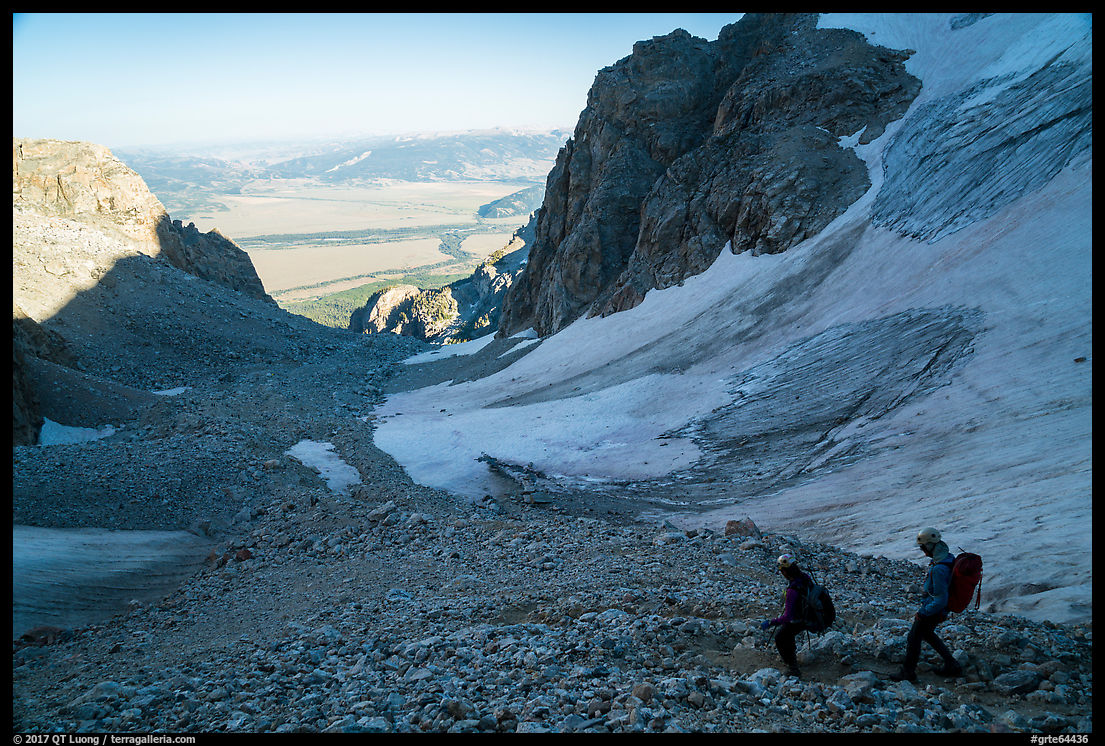
The last photo is of Chris and Aleksandra completing a single-day ascent and descend of the Grand. I had climbed with Chris two decades ago while he was working at Stanford on the first of his two PhDs. I had not seen him since, but he invited us to a prized campsite in the park around the eclipse time (Thanks!), for which he started planning seven years ago. Fittingly, our reunion was below the Lower Saddle. A few days later, Chris and Aleksandra would be back on the Grand to view the eclipse.
The Lower Saddle Camp
Our objective for the afternoon was the Lower Saddle (11,650 Feet), which is the pass between Middle Teton (12,805 feet) and Grand Teton (13,776 feet), and the highest campsite that can be used to climb the Grand Teton. Besides the superlative views both on the Wyoming and Idaho side at sunset, we had a good look at our route for the next day, which follows the prominent ridge in the center of the Grand Teton. I felt a mixture of apprehension and anticipation. Winds can be howling at the Lower Saddle, so we were glad to have found a campsite protected by rock piles.
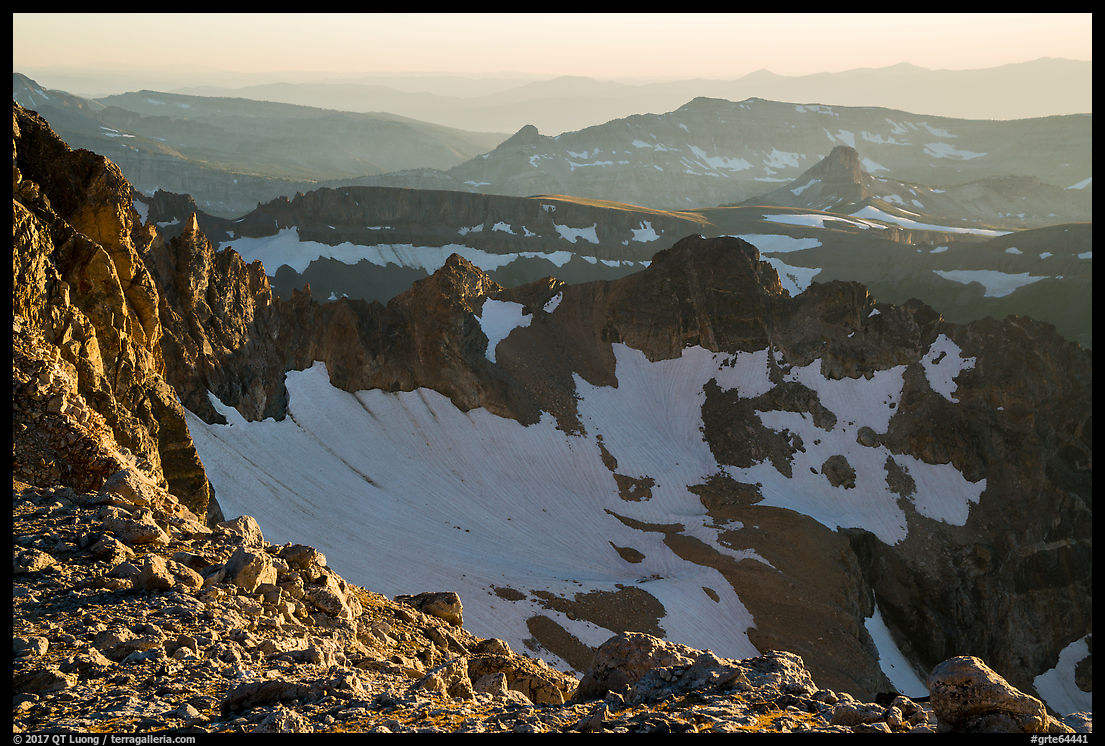
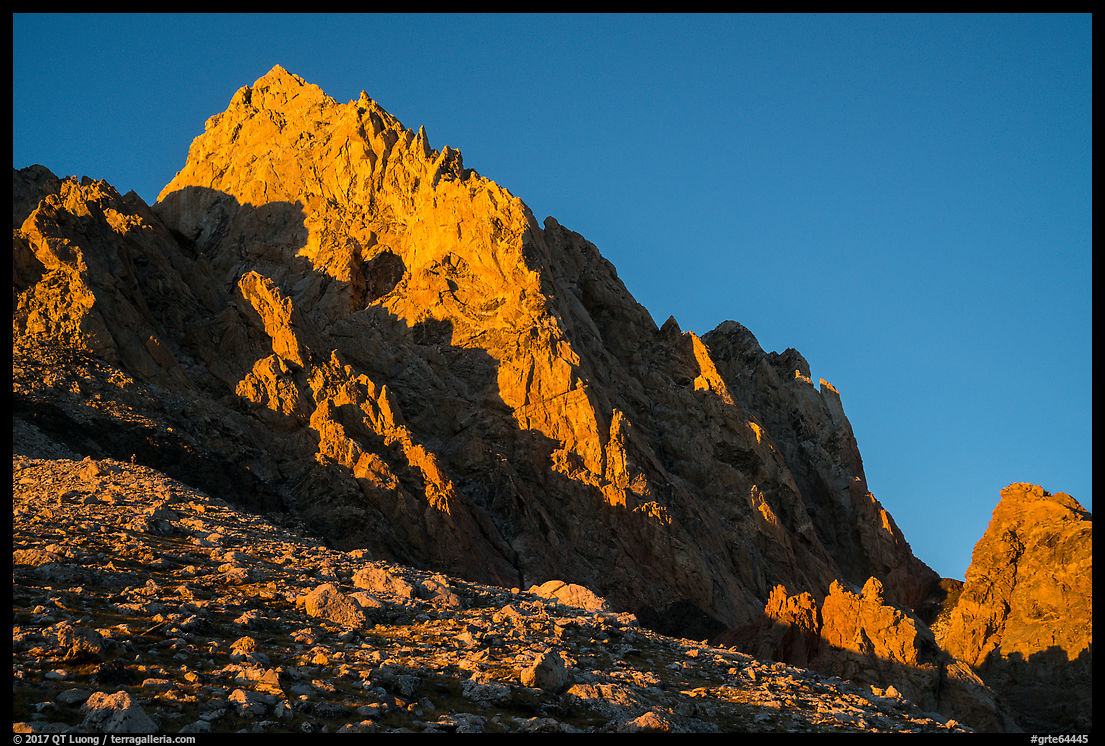
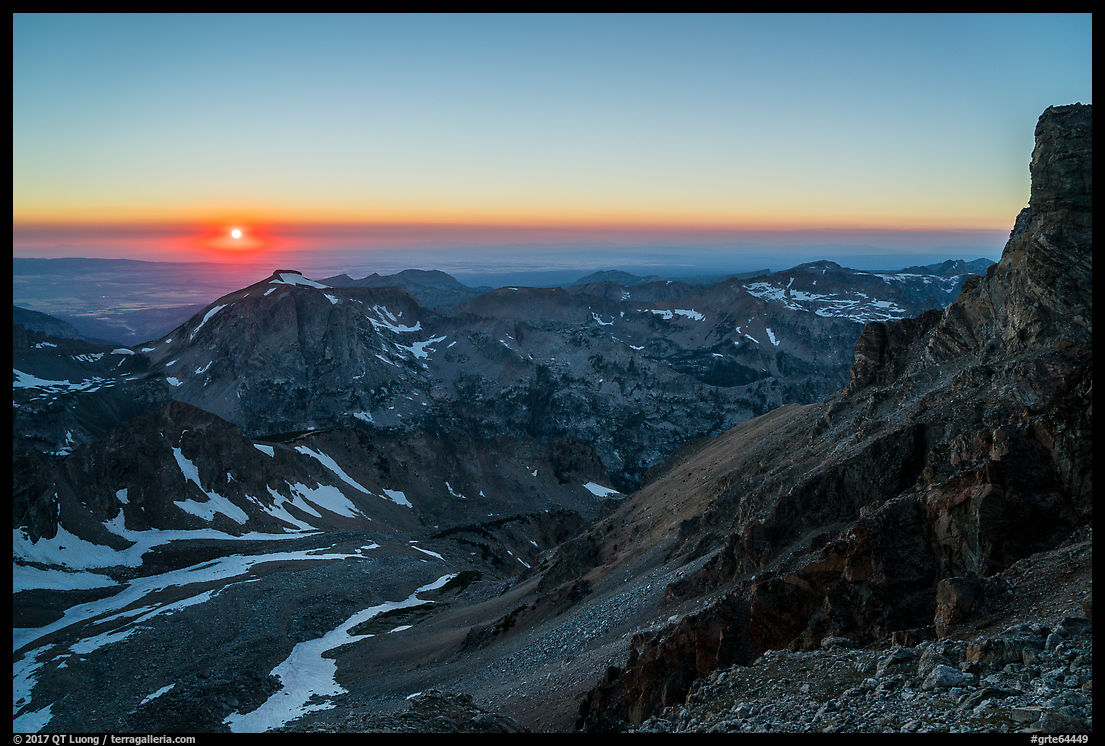
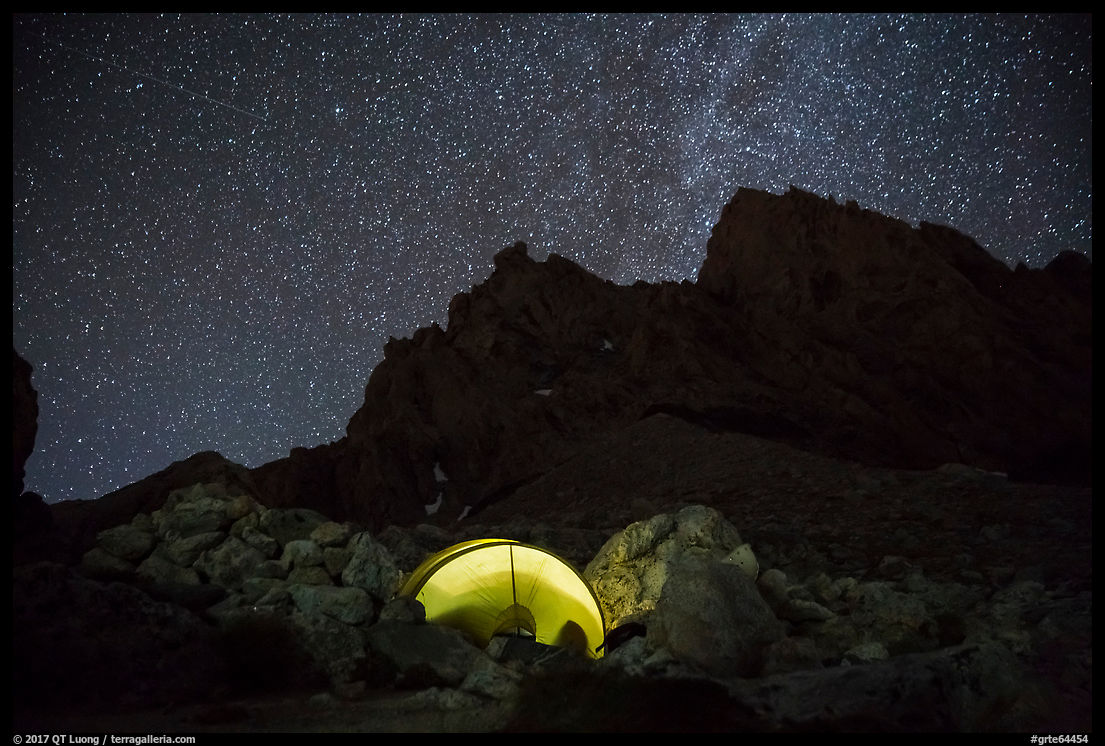
The sunrise
We set up the alarm for 4 am and started towards the mountain, made more mysterious by the night. While scrambling in the dark resulted in some wandering off-route into unstable talus – and a bit of cursing when the slopes gave way underfoot, it was wonderful to witness the arrival of the dawn and sun during the approach to the climb. At such high elevations, the alpenglow takes on a magical quality that I had missed by watching from below on all those years. I could now clearly grasp the structure of the mountains from a high perspective. Because it was a demanding climb for me, I had taken only a 24-70mm lens. In retrospect, the 16-35mm might have been a better choice, but multi-image panoramas worked fine for the scenery. The camera was the mirorless Sony A7R2, and that was one time when I fully appreciated its smaller size and lighter weight compared to the DSLRs!
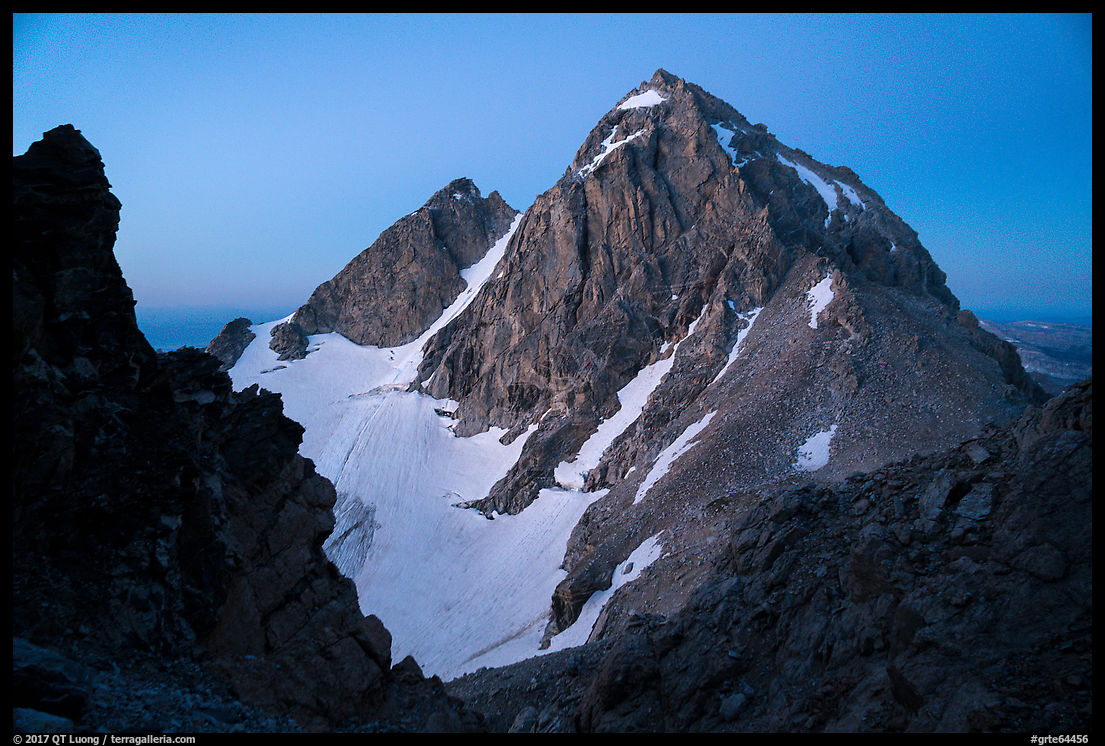
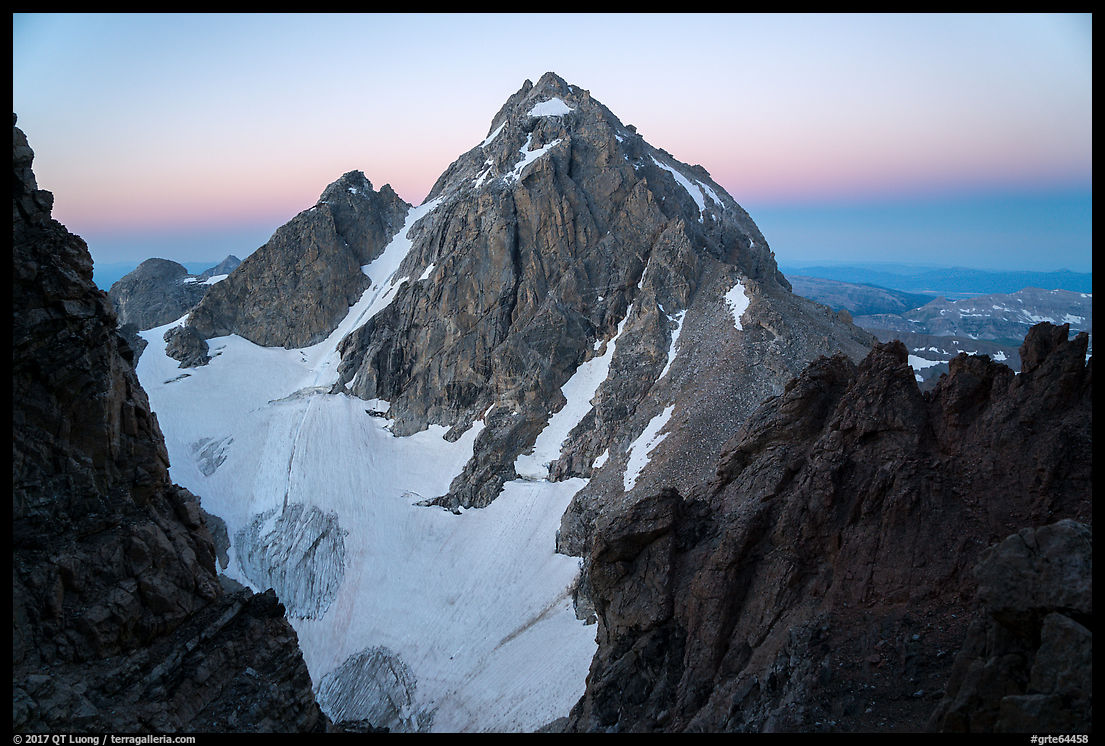
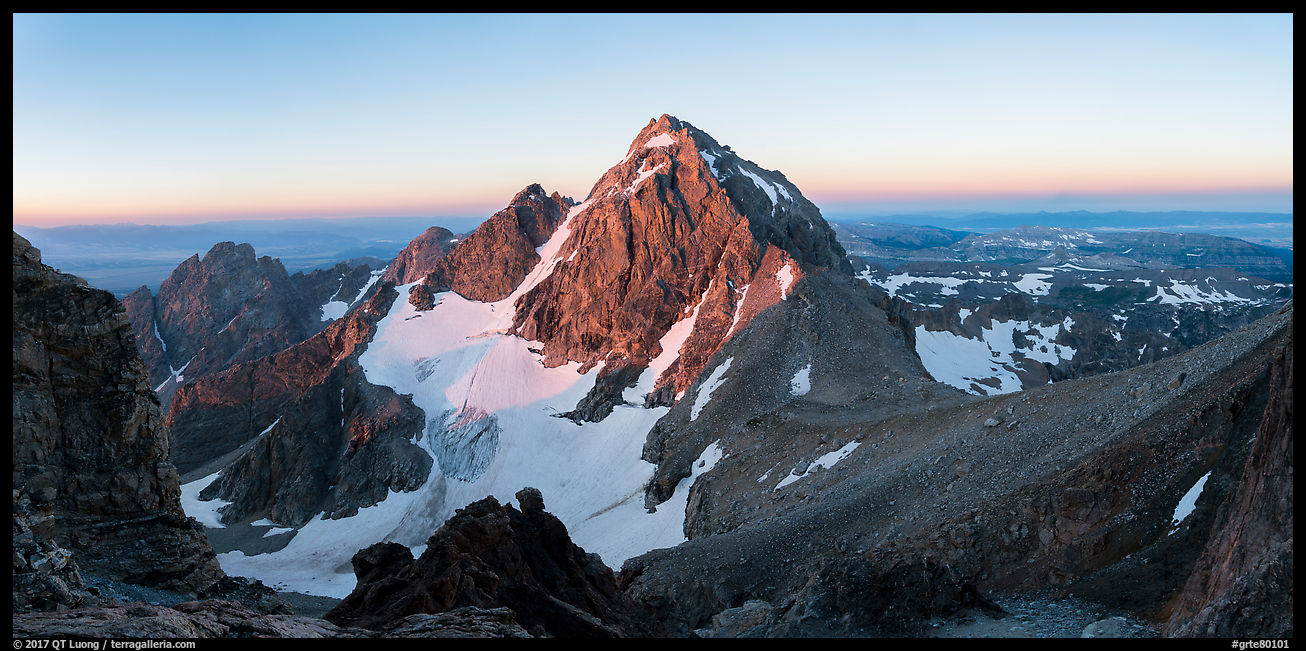
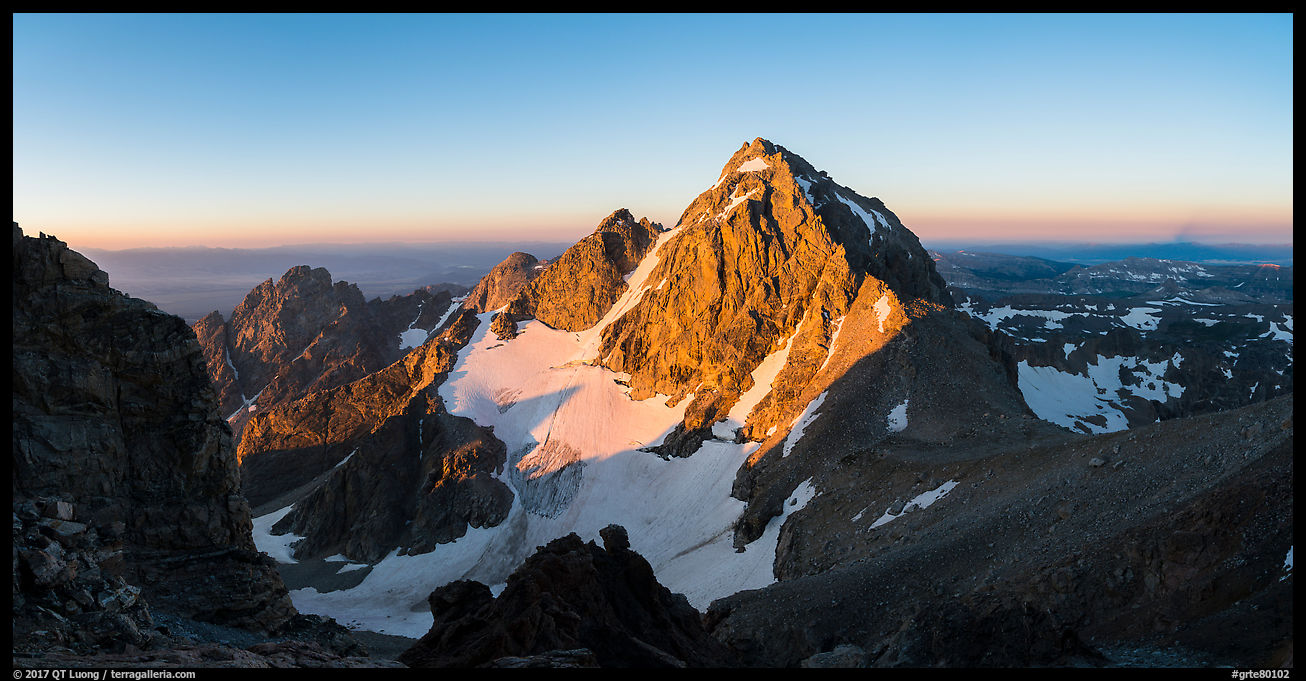
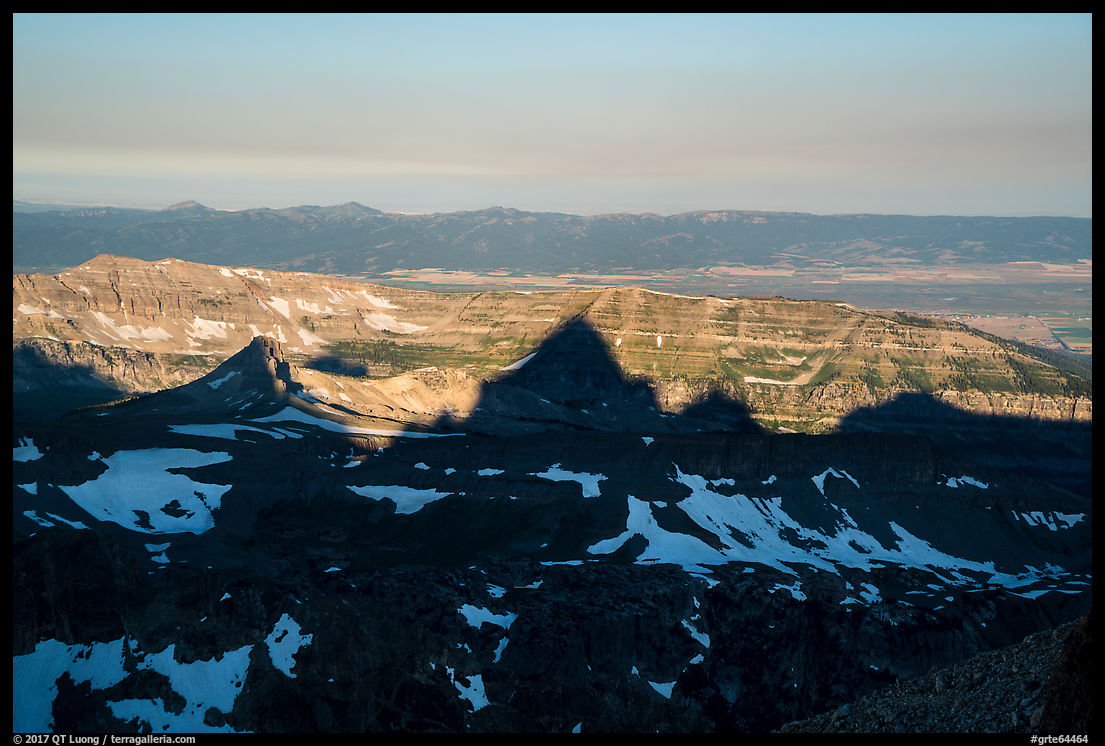
The Exum Ridge climb
We roped up at sunrise. The route turned out to offer excellent climbing, with the sheer walls more intimidating than difficult thanks to positive holds. It had been two decades since I climbed with a pack on my back and I was glad to be following. The sun did not visit us until the junction with the Upper Exum route, and the wind contributed the chill. Although it might sound unpleasant, I relished the memories brought by having fingers numbed by the cold to the point of not feeling the rock. I tried to warm them up with my breath. I was elated by the exposure and the privilege of being in a place where man normally doesn’t belong. After completing the difficult climbing parts of the route, we coiled the rope so that we could move faster towards the summit – which is always further than one thinks.
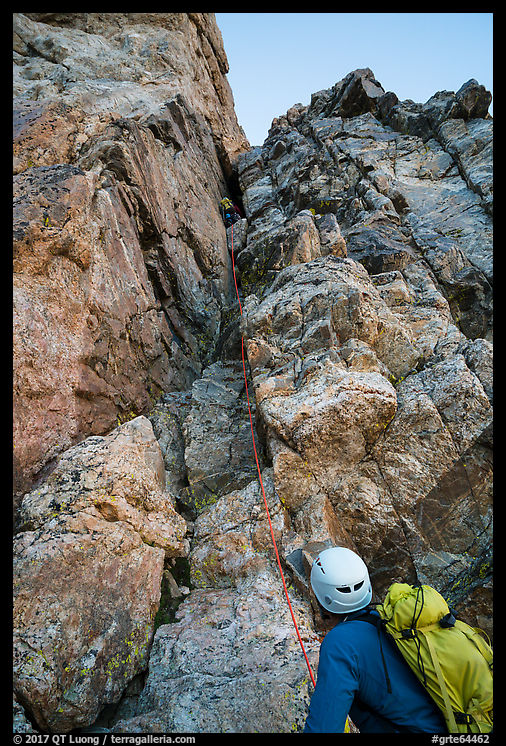
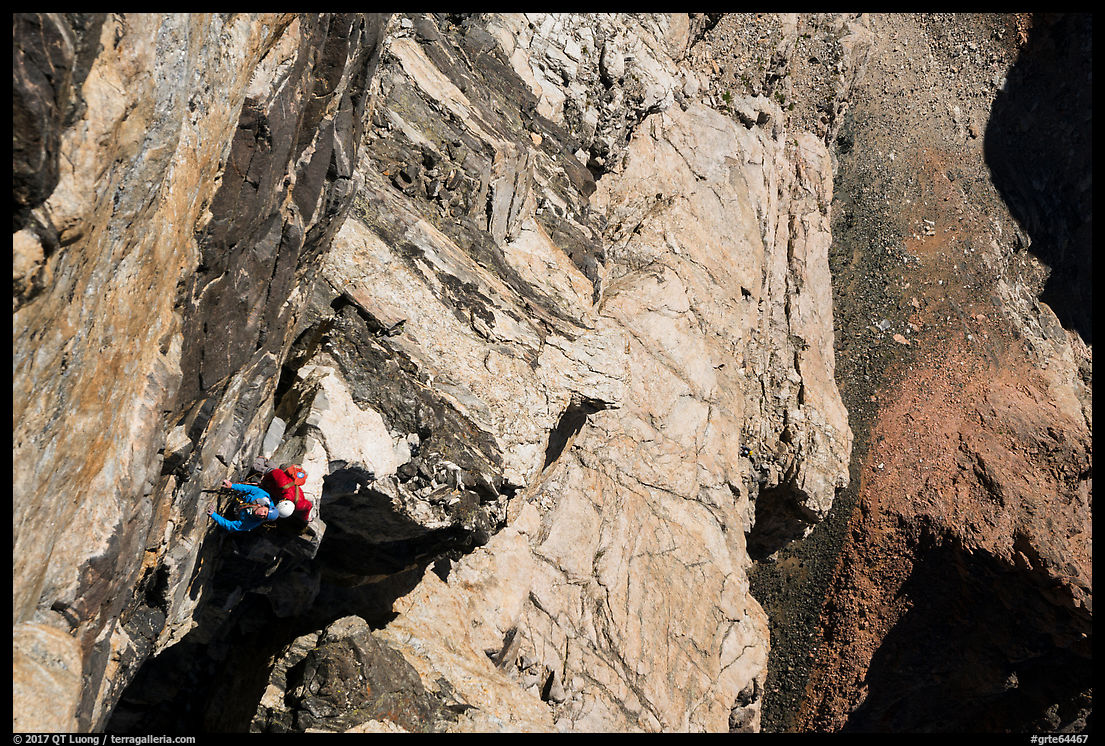
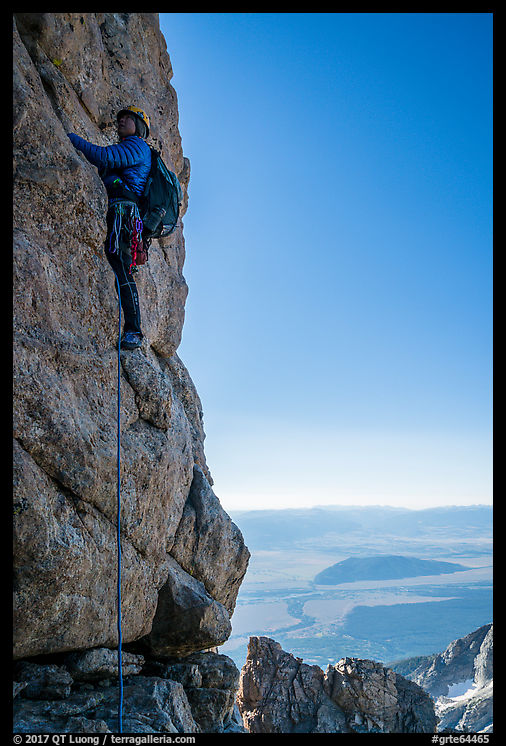
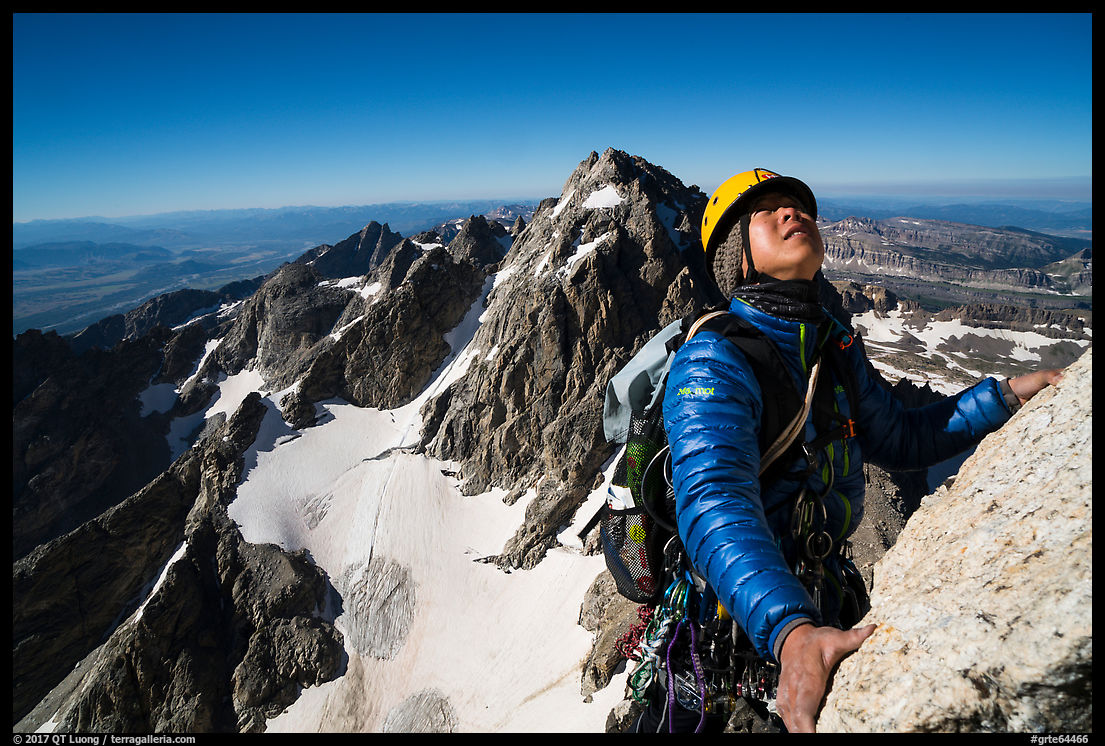
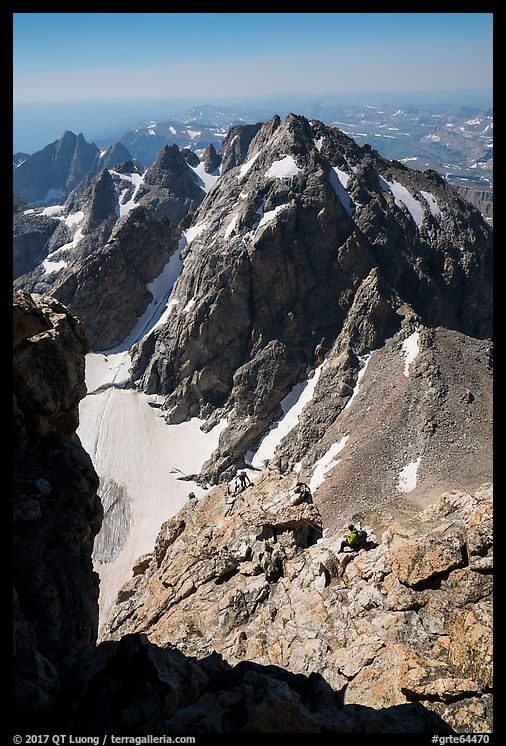
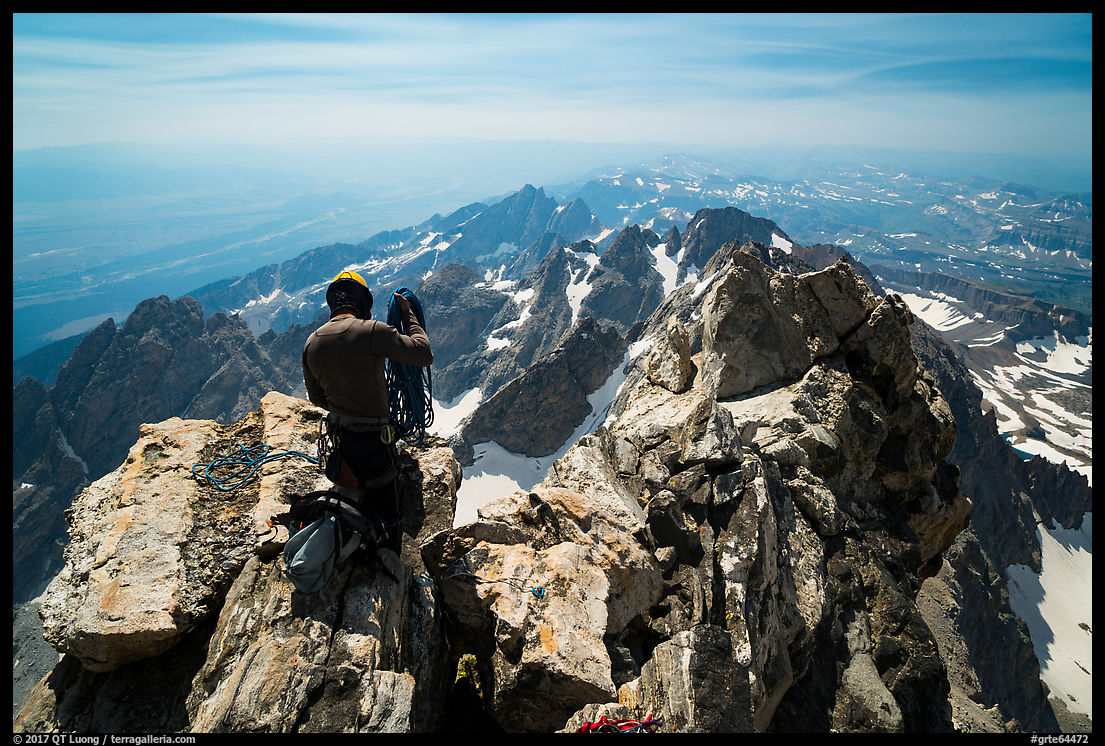
The higher we got, the better the view, as seas of peaks began to unfold. However, this doesn’t necessarily translate to more compelling pictures, and in the hazy midday, I hardly felt like photographing from the summit. It is so difficult to succeed as a mountaineer and a photographer at the same time! However, even if the images from lower are better, it is eventually the experience and memories that make it worth the effort. Although I slowed down our party by running out of gas on the hike down the Garnet Canyon Trail – we would not return to the Lupine Meadows Trailhead until midnight -, I was happy to be able to steer my aging body towards a bit of youth. As with the eclipse, the top remains etched in my mind and I know that I will not look at the mountain the same way as I did before the climb.
View more images of Grand Teton National Park


Thank you so much for taking us along, QT. I have had only a few opportunities to climb rock, and never multi-pitch, but I feel your desire to be up there, and I completely identify with your emotional reaction to the cold fingers, etc. Wow. Good to have read this. It did my soul good to know you’d gotten up there. I aspire to such things yet.
Thanks for your kind words Mark, and best of luck in your journey back to the mountains!